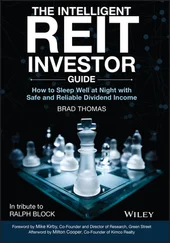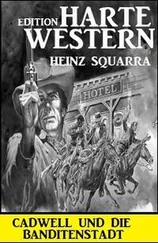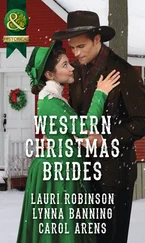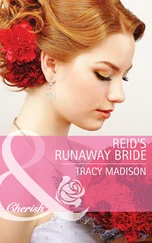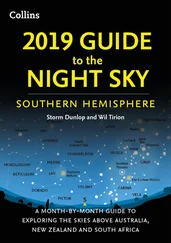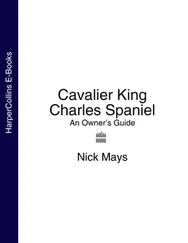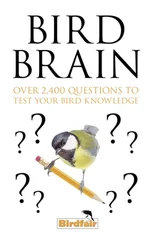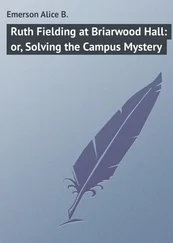Charles Reed - Western Bird Guide
Здесь есть возможность читать онлайн «Charles Reed - Western Bird Guide» — ознакомительный отрывок электронной книги совершенно бесплатно, а после прочтения отрывка купить полную версию. В некоторых случаях можно слушать аудио, скачать через торрент в формате fb2 и присутствует краткое содержание. Жанр: foreign_antique, foreign_prose, на английском языке. Описание произведения, (предисловие) а так же отзывы посетителей доступны на портале библиотеки ЛибКат.
- Название:Western Bird Guide
- Автор:
- Жанр:
- Год:неизвестен
- ISBN:нет данных
- Рейтинг книги:3 / 5. Голосов: 1
-
Избранное:Добавить в избранное
- Отзывы:
-
Ваша оценка:
- 60
- 1
- 2
- 3
- 4
- 5
Western Bird Guide: краткое содержание, описание и аннотация
Предлагаем к чтению аннотацию, описание, краткое содержание или предисловие (зависит от того, что написал сам автор книги «Western Bird Guide»). Если вы не нашли необходимую информацию о книге — напишите в комментариях, мы постараемся отыскать её.
Western Bird Guide — читать онлайн ознакомительный отрывок
Ниже представлен текст книги, разбитый по страницам. Система сохранения места последней прочитанной страницы, позволяет с удобством читать онлайн бесплатно книгу «Western Bird Guide», без необходимости каждый раз заново искать на чём Вы остановились. Поставьте закладку, и сможете в любой момент перейти на страницу, на которой закончили чтение.
Интервал:
Закладка:
Nest.– Of grasses and feathers lined with down, placed on the ground in marshes or near lakes or ponds; four to nine eggs of a buff or drab color are laid (3.50 × 2.50).
Range.– The whole of North America, breeding from northern United States northward, and wintering in the southern part of U. S. to Lower California.
CACKLING GOOSE
This is a perfect miniature of the above, the difference being only in the size. It breeds in Alaska and along the Arctic coast and migrates in winter along the western coast south to southern California. Eggs are buff color; 4 to 9 (2.90 × 1.95).
BLACK BRANT
Head, neck and breast black with a broad white collar nearly encircling the black neck, back a grayish brown; under parts mostly white. They are very inquisitive and easily come to decoys, and consequently large numbers of them are shot each year for the markets. They are a noisy bird especially when in large flocks. They get most of their food by tipping up in the shallow waters, where they feed upon the tender water plants and roots gathered from the bottom.
Nest.– A depression in the ground lined with grass and feathers and the down from their breasts; four to eight eggs are laid of a grayish color (2.80 × 1.75).
Range.– Western North America, breeding abundantly in northern Alaska and wintering on the Pacific coast from British Columbia to Lower California.
EMPEROR GOOSE
This handsome species may be known by the mottled or scaly appearance of the feathers; the head is white with a black chin and throat. Their 3 to 7 eggs are a dull buff color (3.10 × 2.15).
BLACK-BELLIED TREE-DUCK
These odd-shaped ducks, with their long legs and neck, are very common in southern Texas and along the Rio Grande. They are not timid and are frequently caught and domesticated. They can walk and run gracefully, and feed in grain fields at considerable distance from the water. They usually raise two broods in a season, each brood having from ten to as many as twenty.
Nest.– They build their nests in hollow trees, oftentimes at a great distance from the water. The nest is lined with a few feathers and down. The eggs are a creamy white (2.05 × 1.50).
FULVOUS TREE-DUCK
In form this duck is much like the last, but in color is more of a rufous all over, being darkest on the upper parts. It has no white markings. It is fully as abundant as the preceding and is found farther north and west to the Pacific coast in southern California.
Nest.– Their nesting habits; their eggs and the size of them are identical with the former. As many as 32 eggs have been found in one nest, but these were probably laid by two birds.
WHISTLING SWAN
These large birds are snow white, with the exception of their bill and feet, which are black. The nostril is situated nearer the end of the bill than it is to the eye. It is distinguished from the next by the small yellow spot on either side of the bill near its base.
Nest.– Are made of a large mass of rubbish, weeds, moss, grass, feathers and a few sticks, generally placed in marshy places near ponds or lakes. Three to six greenish or brownish buff eggs are laid (4.00 × 2.75).
Range.– North America, more common in the east, breeding in Alaska and the Arctic islands, wintering from British Columbia to the central part of California.
TRUMPETER SWAN
This magnificent bird, over five feet in length, with a spread of wing nearly ten feet, is found more in the interior than on the coast. Its plumage is the same as above, except that the bill is entirely black and the nostril is located nearer the eye. Their nesting habits are the same as above, the eggs averaging a trifle larger.
GLOSSY IBIS – Family Ibididæ
The neck and body of this bird is a rich dark chestnut color, glossy with purplish on the head; wings and tail glossy greenish black; bill, legs and feet carmine red, bill much curved downward.
This bird is just the same as the White-faced Glossy Ibis which is occasionally found in southern California, with the exception that the latter has the forehead and feathers, bordering the bill, white.
Nest.– Strongly and compactly woven of dead rushes attached to living stalks, and well cupped. Eggs 3 or 4 deep greenish blue color (1.95 × 1.35).
WOOD IBIS – Family Ciconiæ
Head and neck unfeathered and covered with scales, which are pale bluish in color as are also the legs. Plumage entirely white except for the primaries and tail, which are glossy purplish black. This is the only true Stork which occurs in North America, and is found only in the southern part of California and the most southern states near the Gulf of Mexico. They lay 3 or 4 white eggs (2.75 × 1.75).
LEAST BITTERN
This small variety of Bittern is very common in the southern portions of the United States. They are very quiet and sly birds, and their presence is often unsuspected when they are really quite abundant. Their nests are made of rushes woven about the upright stalks; 3 to 5 eggs, bluish white (1.20 × .90).
BITTERN – Family Herodii
These are birds of the bogs and marshes, and will keep concealed so closely that one may pass within a few feet of them and they not take flight. They are known by a variety of names, nearly all of which have reference to their “booming” sound while in the bogs. The most common name given them being “Stake Driver” and again “Thunder Pumper.” They are much variegated with brown and yellowish brown; adults with a long, broad black stripe on either side of the white throat; eye is yellow; bill and legs, greenish yellow.
Nest.– They build in swamps or marshy places, placing their nest usually in a tussock of grass on some bog surrounded by water. They lay from three to five brownish colored eggs (1.95 × 1.50).
GREAT BLUE HERON
This handsome Heron in general color in the adult stage is bluish gray, relieved by a black crest, and black primaries and patches on the sides and a white crown. Young birds are much duller colored and lack the crest of the old birds. It takes several years for them to obtain their perfect plumage. In the South they breed in large colonies, often in company with many other species.
Nest.– Is usually built of sticks, making a rude platform in the trees near swamps or wet woods. In some localities as many as 40 nests have been found in a single tree. Three to five eggs of a greenish blue color (2.50 × 1.50).
Range.– North America except the extreme northern part, breeds from British Columbia to southern Lower California.
Читать дальшеИнтервал:
Закладка:
Похожие книги на «Western Bird Guide»
Представляем Вашему вниманию похожие книги на «Western Bird Guide» списком для выбора. Мы отобрали схожую по названию и смыслу литературу в надежде предоставить читателям больше вариантов отыскать новые, интересные, ещё непрочитанные произведения.
Обсуждение, отзывы о книге «Western Bird Guide» и просто собственные мнения читателей. Оставьте ваши комментарии, напишите, что Вы думаете о произведении, его смысле или главных героях. Укажите что конкретно понравилось, а что нет, и почему Вы так считаете.


